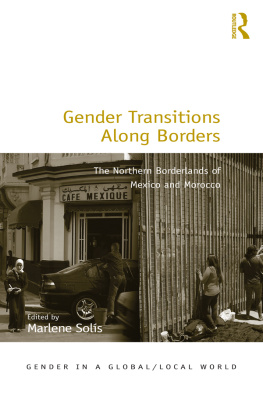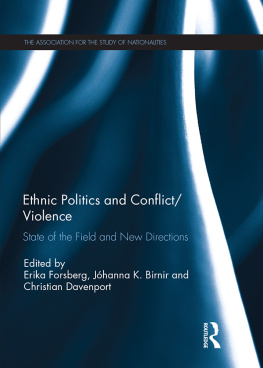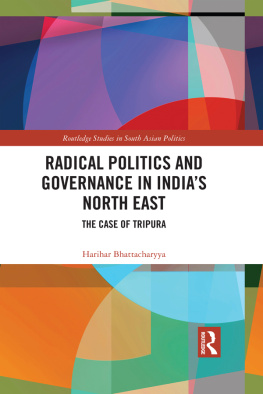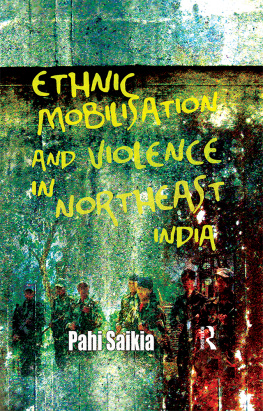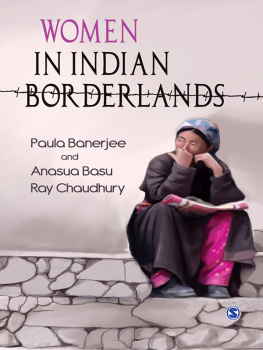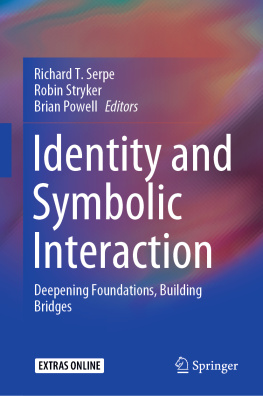
Ethnic Inequality in the Northeastern Indian Borderlands
Ethnic Inequality in the Northeastern Indian Borderlands analyses the relationship between symbolic violence, inequality and ethnicity, and addresses the question of unequal integration of small ethnic groups into state structures by using the Limbus of the Northeastern Indian borderlands as a case study.
Drawing on Pierre Bourdieus concept of symbolic violence, the author argues that the ethnicization of the Limbus has been associated with the devaluation of their cultural identity, which was itself first constructed and naturalized by the same process of ethnicization. The book is a pioneering work in terms of the application of Bourdieus sociology to Northeast India and the theoretical interpretation of ethnic inequality in Northeast India. In addition, the book contributes to the overall understanding of the constant structural identity of symbolic violence and its varying manifestations.
Exploring the symbolic dimensions of power relations within state structures, this book will be of interest to a wide readership from various disciplines including area studies, global studies, comparative studies, borderland studies, inequality studies, sociology, anthropology and political science.
Anita Lama received her doctorate in Global and Area Studies from Humboldt University of Berlin, Germany. Her research interests include social theory, globalisation and inequality.
Routledge Contemporary South Asia Series
Contemporary Literature from Northeast India
Deathworlds, Terror and Survival
Amit R. Baishya
Land-Water Management and Sustainability in Bangladesh
Indigenous practices in the Chittagong Hill Tracts
Ranjan Datta
Dalits, Subalternity and Social Change in India
Edited by Ashok K. Pankaj and Ajit K. Pandey
Identity and Marginality in India
Settlement Experience of Afghan Migrants
Anwesha Ghosh
Political Transformations in Nepal
Dalit Inequality and Social Justice
Mom Bishwakarma
Fertility, Health and Reproductive Politics
Re-imagining Rights in India
Maya Unnithan
Labour, Global Supply Chains, and the Garment Industry in South Asia
Bangladesh After Rana Plaza
Sanchita Banerjee Saxena
Ethnic Inequality in the Northeastern Indian Borderlands
Social Structures and Symbolic Violence
Anita Lama
Kashmir and the Future of South Asia
Edited by Sugata Bose and Ayesha Jalal
For the full list of titles in the series please visit: https://www.routledge.com/Routledge-Contemporary-South-Asia-Series/book-series/RCSA
First published 2021
by Routledge
2 Park Square, Milton Park, Abingdon, Oxon OX14 4RN
and by Routledge
52 Vanderbilt Avenue, New York, NY 10017
Routledge is an imprint of the Taylor & Francis Group, an informa business
2021 Anita Lama
The right of Anita Lama to be identified as author of this work has been asserted by her in accordance with sections 77 and 78 of the Copyright, Designs and Patents Act 1988.
All rights reserved. No part of this book may be reprinted or reproduced or utilised in any form or by any electronic, mechanical, or other means, now known or hereafter invented, including photocopying and recording, or in any information storage or retrieval system, without permission in writing from the publishers.
Trademark notice: Product or corporate names may be trademarks or registered trademarks, and are used only for identification and explanation without intent to infringe.
British Library Cataloguing-in-Publication Data
A catalogue record for this book is available from the British Library
Library of Congress Cataloging-in-Publication Data
Names: Lama, Anita, author.
Title: Ethnic inequality in the Northeastern Indian borderlands : social structures and symbolic violence / Anita Lama.
Description: Abingdon, Oxon ; New York, NY : Routledge, 2021. | Includes bibliographical references and index.
Identifiers: LCCN 2020037492 | ISBN 9780367561581 (hardback) | ISBN 9781003099864 (ebook)
Subjects: LCSH: Bourdieu, Pierre, 1930-2002. | Limbus (Asian people)--India--Sikkim--Social conditions. | Limbus (Asian people)--Ethnic identity. | Ethnic conflict--India--Sikkim. | Equality--India--Sikkim. | Borderlands--India--Social conditions. | Sikkim (India)--Ethnic relations. | Sikkim (India)--Social conditions.
Classification: LCC DS432.L55 L36 2021 | DDC 305.895/4--dc23
LC record available at https://lccn.loc.gov/2020037492
ISBN: 978-0-367-56158-1 (hbk)
ISBN: 978-1-003-09986-4 (ebk)
Typeset in Times
by SPi Global, India
This research monograph is dedicated to my beloved parents for their enduring support despite limited understanding of my world mainly representing dissimilar interests and work.
With gratitude, to my dearest octogenarian father for stepping up in every possible way so that I could find time and space amidst several situational odds to transform my PhD thesis into a book. For this, I feel fortunate.
To my dearest mother who would have done the same or even more, if she were alive.
THANK YOU!
North-east India is a very interesting but understudied region. Most of the existing literature focuses on one state or one ethnic group. Very few studies look at the interaction of groups. Even fewer studies enquire into the interaction of groups across national borders. This book does just that. It studies ethnic configurations in Sikkim, Darjeeling and Nepal with a focus on the Limbus. Thereby, it is not only an important contribution to our understanding of Northeast India but also an addition to the emerging field of cross-border or transnational studies. This field is relevant because the main unit of analysis in the social sciences still is the nation state, which seems to be challenged by globalization. The local configurations below and beyond the nation state are often ignored.
This study also contributes to our theoretical understanding and to social theory in general. By drawing on Pierre Bourdieu, the author studies inequalities between ethnic groups in terms of symbolic violence. This concept has not been sufficiently explored in the framework of Bourdieus theory in spite of its potential. The author shows that inequality on a symbolic level is one of the main dimensions of inequality. She develops this argument theoretically and empirically. Whoever is interested in inequality, should read the book for this reason.
Readers from area studies will not be attracted by the theoretical part, while sociologists will not be interested in the empirical study. In addition, the author develops her argument in historical terms by looking at pre-colonial, colonial and post-colonial configurations of ethnic and symbolic inequality. This history is a valuable contribution as well but will not excite sociologists or anthropologists. However, all three components theory, history and anthropology necessarily complement each other in this book. One should not read one section without the other components.
This integration of theory and empirical material exemplifies new area studies as opposed to the descriptive country or village studies of the twentieth century. Area studies today is informed by high-level theory and contributes to theory. This is not sufficiently acknowledged since appreciation would need to involve some local knowledge and interest, which is usually absent in theorists. A closer look, however, shows that theory also involves local knowledge and empirical facts but they are usually taken from Europe or North America. We have entered a period of theory generation from and in the global South. This book is an example thereof.



